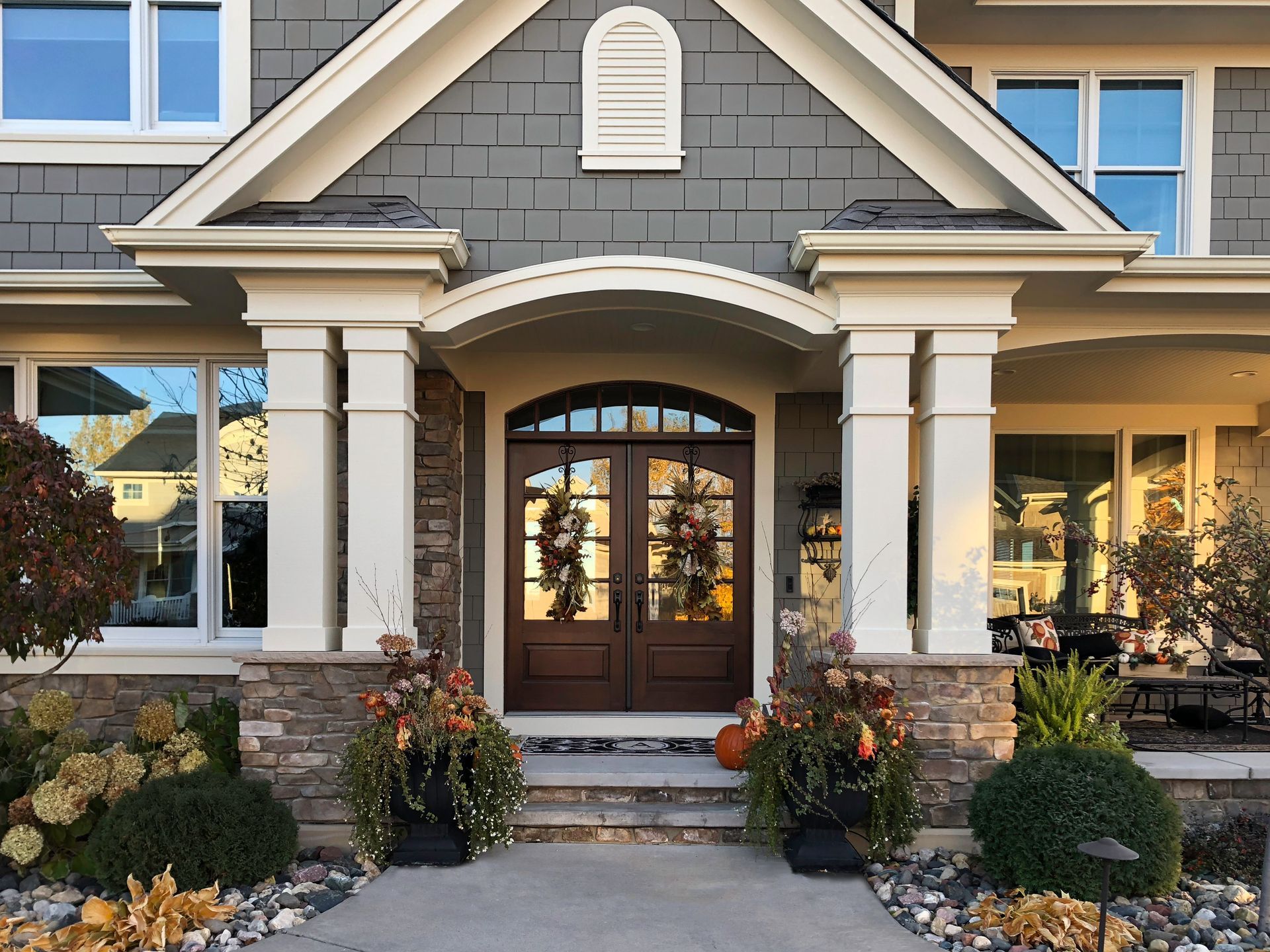How to Choose the Right Location for Your Business
Finding a Location where your business can Thrive

Understanding Local Demographics: The Key to a Successful Business Location
When it comes to choosing the perfect spot for your business, understanding local demographics is more important than ever. Sure, the right space and rent price matter, but knowing who lives and works around your potential location can be a game changer. Demographics tell you about the people in the area—everything from their age and income level to their shopping habits and lifestyle preferences. And that can make all the difference between thriving and merely surviving. Let’s break it down so you can make smarter, informed decisions about your next commercial property investment.
Why Demographics Matter More Than You Think
Think of demographics as your secret weapon in the commercial real estate game. If you know the kind of people frequenting an area, you can tailor your business to meet their needs. For example, if you’re opening a trendy coffee shop in a neighborhood full of college students and young professionals, you’ll want to offer free Wi-Fi and stay open later than usual. On the other hand, if you’re catering to an older, more affluent crowd, you might focus on a cozy atmosphere with artisanal pastries and a premium selection of coffee.
The beauty of understanding demographics is that you’re not just guessing; you’re making data-driven decisions. It’s like having a roadmap that helps you navigate the tricky terrain of location selection. And the best part? The information is out there—you just need to know how to use it.
Demographics Can Reveal Hidden Opportunities
You may think you have a solid idea of who your customers will be, but the local demographics can open your eyes to possibilities you hadn’t considered. For instance, you might be focused on a younger demographic, but what if there’s an untapped market in the area you hadn’t noticed, like young families or retirees? That insight could inspire you to tweak your offerings or your marketing strategy to attract these groups.
Demographics can also show you what’s already working in the area and what’s not. If you find that businesses similar to yours are thriving, it’s a good sign you’re on the right track. But if you notice there’s a lack of a certain type of service or product, you might just be stumbling onto a golden opportunity. Sometimes, the right demographics can tell you where to go next or even inspire a pivot that you hadn’t previously thought about.
How to Research Local Demographics (Without Losing Your Mind)
So, how do you dive into this world of data without getting overwhelmed? Luckily, plenty of tools make researching local demographics a breeze. You can start with free resources like the U.S. Census Bureau’s website, which provides detailed data about population, age, income levels, and more. You can also use tools like Esri’s Tapestry Segmentation to get a clear picture of the lifestyles and buying habits of local consumers. Another great resource is city or county planning departments. They often release reports that forecast growth, zoning changes, or other factors that can influence the local population.
For a more targeted approach, look into local chambers of commerce or business improvement districts. These organizations often have valuable insights into who’s living in and visiting the area, as well as what types of businesses are thriving. Once you’ve gathered your data, it's time to look at patterns. Are there more young professionals, families, or retirees? What’s the average income level? What do these people value, and how do they spend their time and money? These answers will help you decide if the location is a good fit for your business.
Putting Demographics to Work for You
Now that you understand your audience, you can put that knowledge to work. This doesn’t just mean choosing a location; it also means shaping your business offerings and marketing to match the demographics. If your target customers are younger, tech-savvy individuals, you may want to boost your social media presence and offer online ordering or mobile payments. If you’re in an area with families, consider adding kid-friendly amenities or offering promotions during school breaks.
Think of it like this: the more aligned your business is with the local community, the more you’re going to stand out from the competition. Whether you’re opening a retail store, a restaurant, or an office space, knowing the demographic trends can help you create a better customer experience that meets the specific needs of the people around you.
Keep an Eye on Shifting Demographics
One last tip: don’t treat demographic research as a one-and-done task. Communities change over time, and you need to stay ahead of those shifts. Maybe a new residential development is popping up nearby, or a tech company is bringing in a wave of new employees. These changes can drastically alter the local demographics—and with them, the needs of your customer base. By staying on top of these trends, you can adjust your business strategy and even anticipate future opportunities.
In conclusion, understanding local demographics is more than just crunching numbers—it’s about using those insights to make smart decisions for your business. So, next time you’re scouting a location, don’t just look at the square footage and rent. Take a closer look at the people in the area, and you might just find the key to long-term success.
Traffic Patterns and Accessibility: The Silent Heroes of Real Estate Success
When you’re picking a location for your business, you probably think about things like the rent, the building size, or the look of the space. But there’s another factor you shouldn’t overlook—traffic patterns and accessibility. Whether you’re running a cozy café, a retail store, or even an office, the way people get to you (and how easily they can) makes a huge difference. After all, what good is having a great spot if no one can find or reach it? Let’s break down why traffic flow and easy access can make or break your business.
Why Traffic Patterns Are More Important Than You Think
Traffic patterns are like the lifeblood of your business. They tell you when and where people are moving throughout the day. Are there lots of cars zooming by during rush hour? Or maybe there’s a steady flow of foot traffic that passes by your storefront. Understanding these patterns gives you insight into your potential customer base. The more people who regularly pass by, the better your chances of grabbing their attention and turning them into customers.
Imagine this: if your business is located on a street that’s jam-packed with commuters every morning, you’ve got a golden opportunity to catch their eye. Whether it’s a well-placed sign, a catchy window display, or a drive-thru coffee shop, knowing that there’s heavy traffic at certain times can influence how you market yourself. On the flip side, if you’re in a quiet neighborhood where not many cars pass by, you might need to focus more on drawing in foot traffic or online orders. The key is matching your business’s strengths to the flow of traffic in the area.
Foot Traffic vs. Car Traffic: Which One’s Right for You?
Now, let’s talk about the two types of traffic—foot traffic and car traffic. Depending on your business type, you’ll want to focus on one more than the other, or maybe even both. If you’re opening a coffee shop or retail store, foot traffic is a big deal. You want to be in an area where people are walking by regularly, whether they’re on their way to work, shopping, or just taking a stroll. Foot traffic is more common in busy downtown areas or neighborhoods with a lot of local businesses.
On the other hand, car traffic is your best friend if your business depends on drivers. Think gas stations, fast-food joints, or service businesses like car washes and mechanics. You’ll want a location on a busy road where cars naturally pass by, and even better if it’s near a major intersection or highway exit. But here’s the catch—car traffic doesn’t just mean lots of cars. It also means considering things like parking availability and ease of access. No one wants to make a complicated U-turn to get to your store, no matter how amazing your product is.
So, which one is right for you? Take a good look at your target customers. Are they mostly walking around the neighborhood, or are they more likely to be driving? Aligning your business with the right type of traffic will ensure you’re reaching your ideal customers at the right time.
Accessibility: Make It Easy for People to Get to You
Accessibility is another piece of the puzzle, and it’s more than just about location. It’s about how easy it is for people to get to your business without hassle. Let’s face it—no one wants to go to a store or office that’s hard to reach. Whether it’s confusing street layouts, a lack of parking, or a poorly placed entrance, if it’s not easy for people to get to you, they’re probably going to give up before even trying.
Start by thinking about parking. Do you have enough spots available? And are they conveniently located? If your customers have to circle the block multiple times just to find a spot, they may choose a more convenient option. For businesses catering to foot traffic, consider factors like sidewalks, crosswalks, and public transportation stops nearby. If your space is right off a bus or subway stop, you’ve got a built-in advantage.
But accessibility isn’t just about getting to your front door; it’s also about what happens once people are there. Make sure your building is easy to navigate. Is there a clear, inviting entrance? Are there steps or other obstacles that might prevent some customers from visiting? Providing a welcoming and easy-to-access space ensures that everyone—whether they’re walking, driving, or using public transportation—can get to you without frustration.
The Power of Being Visible and Convenient
It doesn’t matter how great your product or service is if people can’t see or get to you easily. That’s where traffic patterns and accessibility come together to form a powerful combination. High traffic means more eyes on your business, and great accessibility means people can actually make their way to your doorstep. This is particularly important for businesses relying on impulse buys or walk-ins. A visible, well-located business with easy access is far more likely to attract new customers than one tucked away in a hard-to-find spot.
Even something as simple as a stoplight or traffic signal can work to your advantage. If your business is located near an intersection where cars have to stop, you’ve got a captive audience. It’s like a mini commercial break where drivers are looking around, potentially noticing your store or restaurant. You’ve got a few seconds to grab their attention and convince them to stop in on their way home.
Putting It All Together for Long-Term Success
So, how can you put all this information to work? The best thing to do is to observe and research the traffic patterns in your chosen area. Spend time in the neighborhood at different times of the day to see how busy it gets. Are people walking, biking, or driving? Does the traffic flow in a way that encourages people to stop by your business, or is it more of a pass-through area? The more you know, the better you can position your business for success.
In the end, traffic patterns and accessibility may not be the first things you think about when choosing a business location, but they’re definitely among the most important. By understanding how people move around the area and making it easy for them to reach you, you’ll set your business up for growth and long-term success. So, next time you’re scouting for a new spot, don’t just focus on the look of the building—pay attention to how people will get there and how often they pass by. You might be surprised by how big a difference it makes!
Evaluating Competitor Proximity: The Key to Finding Your Sweet Spot
When you’re scouting a location for your business, one of the smartest things you can do is take a look around to see who your competitors are. Sure, you want a prime spot with plenty of foot traffic and a great view, but understanding how close your competitors are could make or break your business. Evaluating competitor proximity is about more than just avoiding being too close; it’s about positioning yourself in a way that lets you stand out while still benefiting from the buzz in your area. Let’s dive into why keeping an eye on your competitors can help you make better decisions.
Know When Being Close to Competitors Is a Good Thing
Believe it or not, having competitors nearby can sometimes be a good thing. In certain industries, being close to others in your market can actually drive more business your way. Think about it: if you’re opening a café, being near other restaurants or coffee shops could create a sort of “foodie hub” where people know they have options. When there are several similar businesses in one area, it can attract more customers who come for the variety and stay for the experience.
Let’s take shopping malls, for instance. In a mall, you’ll find multiple clothing stores or tech shops clustered together. The idea is that if someone doesn’t find what they’re looking for in one store, they’ll pop into the next one. So, instead of competing directly, you’re sharing the customer base and benefiting from the increased foot traffic that the entire area draws.
However, you need to gauge whether the competition is too stiff or if there’s enough of a customer base to support several businesses like yours. If you position yourself too closely to a well-established, dominant competitor, you might struggle to get noticed. But, if you can bring something unique to the table, you can still carve out your niche in a competitive area.
Standing Out in a Crowded Market
If you do decide to set up shop near competitors, you’ve got to be ready to stand out. After all, what’s going to make customers choose you over the business next door? Start by offering something that your competitors don’t. Maybe it’s a more personalized service, a specialty product, or even just a better atmosphere. The key is to differentiate yourself in a way that matters to your target audience.
Think about customer preferences and figure out what your competitors might be missing. For example, if you’re opening a yoga studio and there’s already one down the street, maybe you can offer different class times, a unique fitness style, or additional wellness services like meditation or nutrition workshops. When evaluating competitor proximity, ask yourself, “What’s going to make me the go-to spot?” The answer should be something that your competitors aren’t providing—or aren’t doing as well as you can.
Another way to stand out is through your branding and marketing. If your competitors are more traditional, you might opt for a fun, modern approach that attracts a younger crowd. Or, if the area is saturated with casual restaurants, maybe your upscale, fine-dining concept is just what the neighborhood needs. The key is to understand the local market and find that sweet spot where your business offers something fresh and exciting.
Know When Too Close Is Too Close
While there are benefits to being near competitors, you don’t want to end up too close for comfort. Opening your business next door to someone offering the exact same thing can lead to a price war or, worse, cannibalizing each other’s customers. If there’s only room for one coffee shop on the block and your competitor is already well-established, you may find it tough to break in unless you’ve got something really unique to offer.
Another issue with being too close to competitors is that you risk getting overshadowed. Let’s say there’s a popular bakery that’s been in the neighborhood for years, and you open a new one right next door. Chances are, loyal customers will stick with what they know, and it might take time (and a lot of effort) to get them to even notice your bakery. In this case, being a little further away—while still in the general area—might work better. That way, you can build your own customer base without fighting for every sale.
Finding the Right Balance
So, how do you evaluate competitor proximity in a way that benefits your business? First, do your homework. Check out local maps, look at business directories, and take a walk around the area to see what’s already there. Pay attention to what types of businesses are thriving and which ones are struggling. Are there certain gaps in the market that you could fill? Are there customer pain points that no one else is addressing? These questions will help you determine whether you can coexist with competitors or if it’s better to look elsewhere.
It’s also worth considering whether the local market is growing. If a new development is bringing in more residents or businesses, there might be enough demand to support another business like yours. In this case, being close to competitors isn’t as risky because the overall market is expanding. But if the area is already saturated, you’ll need to be extra cautious about setting up shop right next door.
Conclusion: Competitor Proximity as a Strategic Tool
At the end of the day, evaluating competitor proximity is about strategy. You want to position yourself in a place where you can benefit from the local business environment without getting lost in the shuffle. Being near competitors isn’t necessarily a bad thing—it can even help boost your business if done right. The trick is knowing when to be close, when to differentiate yourself, and when it’s better to find your own space. By taking the time to understand the competitive landscape and your unique strengths, you’ll be setting yourself up for success in the long run.
Zoning Laws and Future Development: Why They Matter for Your Business
When you’re searching for the perfect spot to open your business, it’s easy to focus on the here and now—location, rent, foot traffic—but what about the future? Zoning laws and future development plans are key factors that can impact your business in ways you might not expect. Whether you’re starting a retail shop, restaurant, or office, understanding zoning and what’s on the horizon for your neighborhood can be a game changer. Let’s explore how these two important elements can help you avoid headaches and set your business up for long-term success.
What Are Zoning Laws, and Why Should You Care?
Zoning laws are like the invisible hand guiding what kind of development can happen in different areas. They tell you what’s allowed to be built in a specific location and what kind of business activities are permitted. These laws divide a city or town into different zones, such as residential, commercial, industrial, or mixed-use, and they dictate what can and can’t happen in those areas.
So, why should you care? Well, zoning laws can directly affect whether your business is allowed to operate in a given space. Imagine finding the perfect spot for your café, only to discover the area is zoned for residential use only. Suddenly, your dream location is off-limits. This is why checking zoning regulations before you sign a lease or make a purchase is crucial. You want to make sure your business is compliant from the start to avoid costly fines or, worse, being forced to relocate.
How Zoning Can Shape Your Business’s Success
But zoning laws don’t just tell you what you can’t do—they can also help shape your business’s success. For instance, certain zoning classifications can encourage businesses to cluster together in an area, creating a thriving commercial district. Being located in a designated shopping or dining zone can increase foot traffic and visibility for your business. Plus, you’ll likely benefit from being surrounded by complementary businesses that attract the same kinds of customers.
Zoning laws can also impact things like parking availability, signage regulations, and the types of services you can offer. For example, some areas may have restrictions on the size or placement of signs, which could affect how easily customers can find your store. Other areas might limit the hours you’re allowed to operate. The more you know about the zoning rules for your area, the better prepared you’ll be to work within those regulations and still run a successful business.
The Role of Future Development in Your Business Planning
While zoning laws are important for today, future development plans are key to understanding what might happen tomorrow. Cities and towns are constantly changing, and knowing what’s coming down the road can give you an edge. For instance, if a new residential development is being planned nearby, it could mean an influx of potential customers for your business. On the other hand, if a major highway or industrial site is being built, it could change the dynamics of the area, possibly making it less appealing for your target market.
Keeping an eye on future development plans allows you to anticipate changes and adapt accordingly. If a new shopping center or mixed-use development is in the works, you might want to position your business to take advantage of increased traffic or adjust your marketing strategy to cater to a changing demographic. Many cities and municipalities publish their development plans online, so doing a little research can give you valuable insight into how your neighborhood is likely to evolve in the coming years.
Balancing Short-Term Gains with Long-Term Planning
One of the trickiest parts of starting a business is balancing the need for immediate success with long-term sustainability. This is where understanding both zoning laws and future development comes in handy. You want to choose a location that not only meets your current needs but also has the potential to grow with your business.
Let’s say you’re opening a retail store, and you’ve found a great spot that’s perfect for your current customer base. But what if, five years from now, that area is going to be rezoned for industrial use? Suddenly, your once-bustling shopping district might turn into a quiet, industrial zone that’s no longer ideal for retail. On the flip side, if you know that an area is slated for mixed-use development with new apartments, offices, and retail spaces, it might be worth betting on that location—even if it’s not fully developed yet—because the future potential is huge.
Thinking about the long-term can also help you avoid surprises down the road. Imagine opening your dream restaurant only to find out that the city plans to tear up the street for major construction in two years. That kind of disruption could seriously impact your business, but if you know about it in advance, you can plan ahead and adjust your strategy.
Navigating Zoning Laws and Future Development Like a Pro
So, how do you stay on top of zoning laws and future development plans? It might sound complicated, but it doesn’t have to be. Start by visiting your local zoning office or checking their website for zoning maps and regulations. If you’re not sure what you’re looking at, don’t hesitate to ask questions—zoning officers can help explain the rules in plain language. You can also consult with a real estate lawyer or a commercial real estate broker (hey, that’s where someone like me can come in handy!) to make sure you’re covering all your bases.
As for future development, check with your city’s planning department or look for local news on upcoming projects. Attending city council meetings or joining local business associations can also keep you in the loop about any changes that might affect your area. The more informed you are, the better equipped you’ll be to make smart, strategic decisions for your business.
Conclusion: The Power of Zoning and Future Planning
At the end of the day, zoning laws and future development are powerful tools that can shape the future of your business. By understanding the rules that govern your location and staying aware of what’s coming next, you can position your business for success—both now and in the years to come. So, next time you’re considering a new space, don’t just think about how it looks today—think about what the future holds, and make sure your business is ready to grow with it!


LOCATION
9804 Pictor Ct
Louisville, KY
40241
CONTACT US
We are committed to providing an accessible website. If you have difficulty accessing content, have difficulty viewing a file on the website, notice any accessibility problems, or should you require assistance in navigating our website, please contact us.
©Copyright - All Rights Reserved
Website Powered by National Association of REALTORS®















